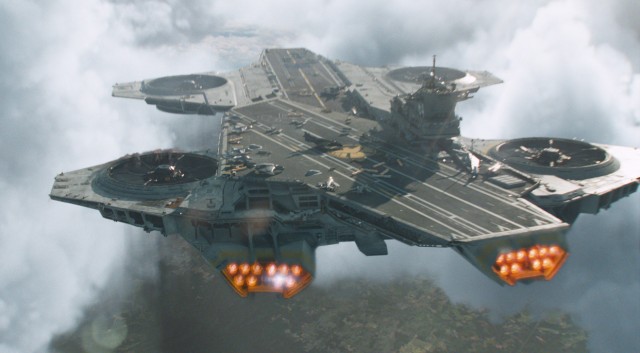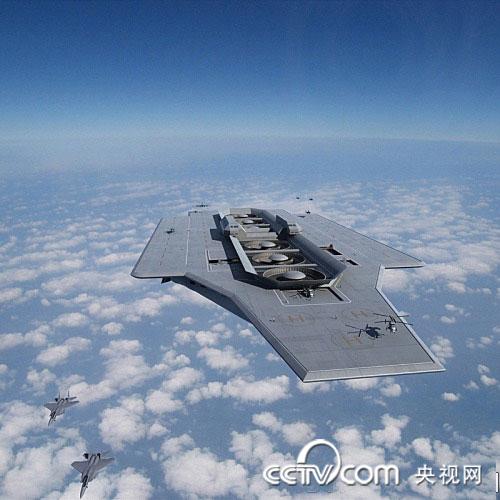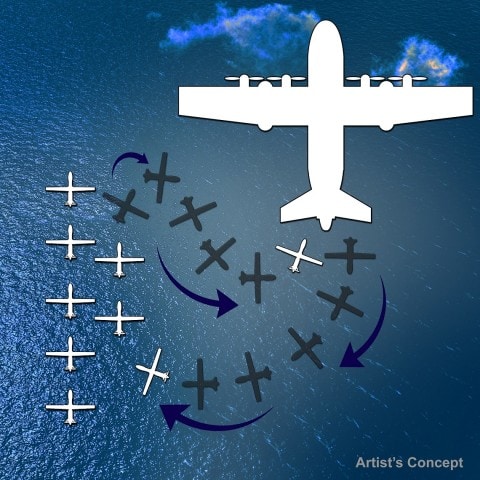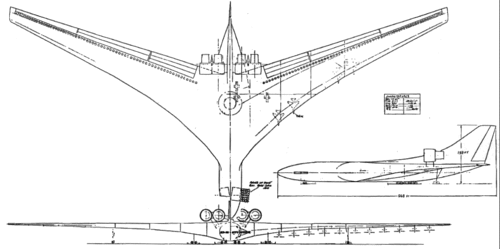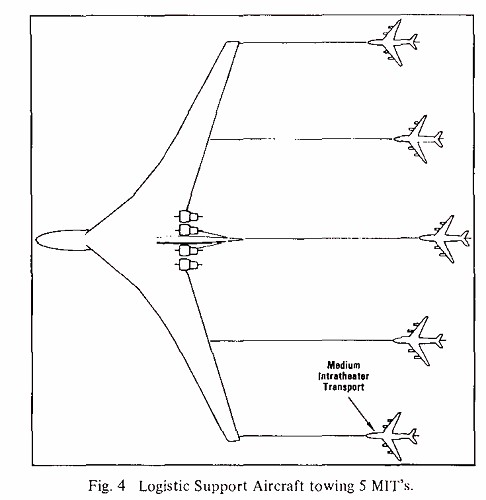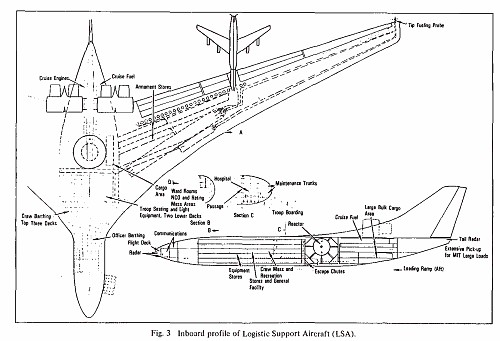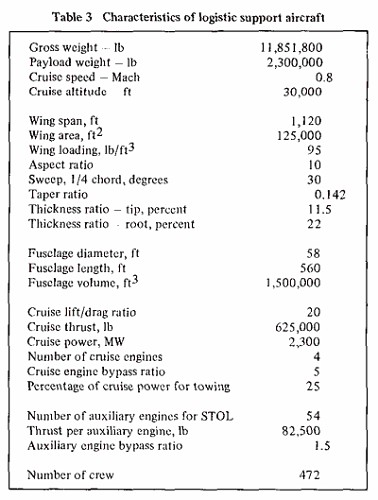From Wikipedia :An airborne aircraft carrier is a type of mother ship aircraft which can carry, launch, retrieve and support other smaller aircraft.[1]
The only examples to have been built were airships, although airborne aircraft carriers of various types appear in fiction.
Airship projectsEdit
The British Imperial Airship Scheme of 1924 initially envisaged an airship that could carry five fighter aircraft in military use, but this requirement was abandoned and the project saw only the civilian R100 and R101 airships to completion.[2]
USS Akron and MaconEdit
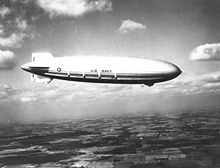
The Akron in flight, November 1931
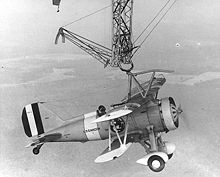
A Sparrowhawk fighter attached to the trapeze beneath Macon, 1933
The two rigid airships of the Akron class, Akron and Macon, were built for scoutingduties for the U.S. Navy and operational between 1931 and 1935.
Following experiments with launching and recovering small aeroplanes using USS Los Angeles, the US Navy designed Akron and Macon with internal hangars able to house a number of Curtiss F9C Sparrowhawk biplane fighters. The fighters were launched and recovered using a "trapeze" mechanism.[3]
With lengths of 785 ft (239 m), Akron and Macon were among the largest flying objects in the world and still hold the world record for helium-filled airships.[citation needed] They were just 20 ft (6.1 m) shorter than the German hydrogen-filled airship Hindenburg.
Akron first flew on 8 August 1931 and Maconfollowed on 21 April 1933. The Sparrowhawk fighters became operational in September 1932. Akron was destroyed on 4 April 1934 and Macon on 12 February 1935.[4]
During her accident-prone 18-month term of service, the Akron served as an airborne aircraft carrier for launching and recovering F9C Sparrowhawk fighter planes. Akron was destroyed[5] in a thunderstorm off the coast of New Jersey on the morning of 4 April 1933, killing 73 of her 76 crewmen and passengers. This accident was the largest loss of life for any known airship crash.[6]
Macon was designed to carry biplane parasite aircraft, five single-seat Curtiss F9C Sparrowhawk for scouting or two-seat Fleet N2Y-1 for training. In service for less than two years, in 1935 Macon was damaged in a storm and lost off California's Big Sur coast, though most of the crew were saved. The wreckage is listed as "USS Macon Airship Remains" on the U.S. National Register of Historic Places.
Lockheed CL-1201Edit
Main article: Lockheed CL-1201
The Lockheed CL-1201 was a study for a giant atomic-powered transport aeroplane. Having a wing span of 1,120 feet (340 m), one variant studied was an airborne aircraft carrier with a complement of up to 22 fighter aircraft carried under its wings.[7]
In fictionEdit
The only examples to have been built were airships, although airborne aircraft carriers of various types appear in fiction.
Airship projectsEdit
The British Imperial Airship Scheme of 1924 initially envisaged an airship that could carry five fighter aircraft in military use, but this requirement was abandoned and the project saw only the civilian R100 and R101 airships to completion.[2]
USS Akron and MaconEdit

The Akron in flight, November 1931

A Sparrowhawk fighter attached to the trapeze beneath Macon, 1933
The two rigid airships of the Akron class, Akron and Macon, were built for scoutingduties for the U.S. Navy and operational between 1931 and 1935.
Following experiments with launching and recovering small aeroplanes using USS Los Angeles, the US Navy designed Akron and Macon with internal hangars able to house a number of Curtiss F9C Sparrowhawk biplane fighters. The fighters were launched and recovered using a "trapeze" mechanism.[3]
With lengths of 785 ft (239 m), Akron and Macon were among the largest flying objects in the world and still hold the world record for helium-filled airships.[citation needed] They were just 20 ft (6.1 m) shorter than the German hydrogen-filled airship Hindenburg.
Akron first flew on 8 August 1931 and Maconfollowed on 21 April 1933. The Sparrowhawk fighters became operational in September 1932. Akron was destroyed on 4 April 1934 and Macon on 12 February 1935.[4]
During her accident-prone 18-month term of service, the Akron served as an airborne aircraft carrier for launching and recovering F9C Sparrowhawk fighter planes. Akron was destroyed[5] in a thunderstorm off the coast of New Jersey on the morning of 4 April 1933, killing 73 of her 76 crewmen and passengers. This accident was the largest loss of life for any known airship crash.[6]
Macon was designed to carry biplane parasite aircraft, five single-seat Curtiss F9C Sparrowhawk for scouting or two-seat Fleet N2Y-1 for training. In service for less than two years, in 1935 Macon was damaged in a storm and lost off California's Big Sur coast, though most of the crew were saved. The wreckage is listed as "USS Macon Airship Remains" on the U.S. National Register of Historic Places.
Lockheed CL-1201Edit
Main article: Lockheed CL-1201
The Lockheed CL-1201 was a study for a giant atomic-powered transport aeroplane. Having a wing span of 1,120 feet (340 m), one variant studied was an airborne aircraft carrier with a complement of up to 22 fighter aircraft carried under its wings.[7]
In fictionEdit
- Helicarrier – Nick Fury/S.H.I.E.L.D./The Avengers.[8]
- Cloudbase – Captain Scarlet and the Mysterons.[9]
- Skybase – Gerry Anderson's New Captain Scarlet.[10]
- Iron Vulture – Airship captained by the air pirate leader Don Karnage in the Disneyanimated series TaleSpin.[11]
- Valiant – Doctor Who.
- Royal Navy mobile airstrips – Sky Captain and the World of Tomorrow.[12]
- Pandora – Airship used by Nathan Zachary and his air pirate gang the Fortune Hunters in the Crimson Skies game franchise.[13][14]
- P-1112 Aigaion of the Ace Combat series.[15]
- Daedalus – Flying STAG Aircraft Carrier in Saints Row: The Third.[16]
- Prydwen – Large armoured airship constructed by the Brotherhood of Steel in the 2015 video game Fallout 4.[17]

